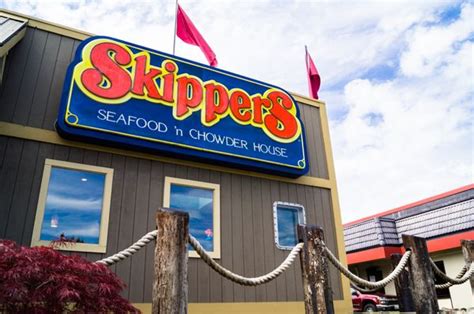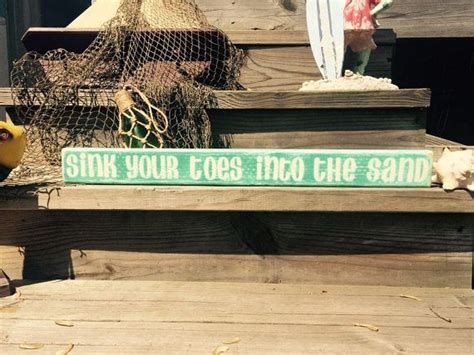
Once a dominant force in the seafood restaurant industry, Skipper’s, a chain known for its affordable fish and chips and nautical-themed décor, has dwindled to its last three locations, all situated in Washington state, marking a significant decline from its peak in the 1970s and 80s.
The once-ubiquitous seafood chain, a staple for families seeking budget-friendly dining, now exists solely in the Evergreen State, a stark contrast to its heyday when hundreds of Skipper’s restaurants dotted the American landscape. The surviving locations serve as a nostalgic reminder of a bygone era of fast-casual dining, even as the restaurant grapples with changing consumer preferences and increased competition. The company has not released any statement.
A Deep Dive into Skipper’s Decline
Skipper’s Seafood & Chowder House, as it was officially known, emerged in the late 1960s, capitalizing on the growing demand for accessible seafood options. The chain’s menu featured familiar favorites such as fish and chips, clam chowder, and fried shrimp, all offered at prices that appealed to a broad customer base. The nautical theme, complete with ship wheels, fishing nets, and maritime imagery, added to the restaurant’s family-friendly atmosphere.
The 1970s and 80s witnessed Skipper’s rapid expansion. Fueled by franchising, the chain quickly spread across the United States, particularly in the Pacific Northwest and Midwest. At its peak, Skipper’s boasted hundreds of locations, becoming a recognizable presence in countless communities. For many, Skipper’s represented an affordable and reliable option for a quick seafood meal. The brand was heavily marketed to families, emphasizing its value and convenient locations. The company’s success stemmed from a combination of factors: a simple, appealing menu; a consistent dining experience; and effective marketing strategies.
However, the tides began to turn in the 1990s. Increased competition from other fast-food chains, including those offering seafood alternatives, eroded Skipper’s market share. Changing consumer tastes, with a growing demand for healthier and more diverse dining options, also contributed to the chain’s decline. Skipper’s struggled to adapt to these evolving trends. The menu remained largely unchanged, and the restaurants’ décor became increasingly dated.
Furthermore, the chain faced internal challenges, including inconsistent management and financial difficulties. Several franchisees struggled to maintain profitability, leading to closures. A series of ownership changes further destabilized the company. The brand lost its focus, and the quality of the dining experience declined.
The early 2000s saw a significant contraction in the number of Skipper’s locations. One by one, restaurants closed their doors, often with little fanfare. The chain’s presence gradually diminished, leaving only a handful of locations in Washington state. These remaining restaurants, operated by dedicated franchisees, have managed to survive despite the odds.
The Last Stand in Washington
The fact that the last three Skipper’s restaurants are located in Washington state is not entirely coincidental. The Pacific Northwest has a strong connection to seafood, and Skipper’s has maintained a loyal following in the region. The surviving franchisees have adapted their operations to cater to local tastes and preferences. They have also focused on providing a high level of customer service, fostering a sense of community around their restaurants.
These remaining Skipper’s locations serve as a testament to the chain’s enduring appeal. Many customers have fond memories of dining at Skipper’s as children, and they continue to visit the restaurants for a taste of nostalgia. The restaurants have become local landmarks, representing a piece of the region’s culinary history.
“It’s more than just a restaurant; it’s a part of our community,” said a long-time patron of one of the remaining Skipper’s locations, whose name was withheld. “We’ve been coming here for years, and we love the food and the friendly atmosphere.”
The franchisees of the remaining Skipper’s restaurants face an uncertain future. They must contend with rising operating costs, increased competition, and the challenge of maintaining the brand’s relevance in a rapidly changing market. However, they remain committed to preserving the legacy of Skipper’s.
They have implemented various strategies to attract new customers and retain existing ones. These include offering special promotions, updating the menu with new items, and improving the restaurants’ décor. They have also embraced social media to connect with customers and promote their businesses. The key to their survival lies in their ability to adapt to the evolving needs of their customers while staying true to the core values that made Skipper’s successful in the first place: affordable seafood, friendly service, and a nostalgic atmosphere.
The survival of Skipper’s in Washington state is a story of resilience, adaptation, and the enduring power of nostalgia. While the chain may never regain its former glory, its legacy will continue to live on through the remaining restaurants and the memories of countless customers.
The Legacy and Lessons Learned
Skipper’s story offers valuable lessons for the restaurant industry. It highlights the importance of adapting to changing consumer tastes, maintaining consistent quality, and investing in innovation. The chain’s decline serves as a cautionary tale for businesses that fail to evolve with the times. The restaurant industry is fiercely competitive, and companies must constantly strive to improve their offerings and stay ahead of the curve.
Furthermore, Skipper’s story underscores the importance of strong management and financial stability. The chain’s internal challenges contributed significantly to its decline. Companies must have a clear vision, effective leadership, and sound financial practices to succeed in the long run.
Despite its decline, Skipper’s left an indelible mark on the American culinary landscape. It demonstrated the potential of fast-casual seafood and paved the way for other chains to enter the market. The chain’s legacy lives on through the memories of those who enjoyed its affordable meals and family-friendly atmosphere. And in Washington state, a few Skipper’s restaurants continue to serve as a reminder of a bygone era, a testament to the enduring power of nostalgia and the dedication of a few passionate franchisees. The nautical theme is no longer as prevalent in many restaurants.
The Future of the Remaining Skipper’s
The future of the remaining Skipper’s locations is uncertain. While they have managed to survive against the odds, they face significant challenges. The franchisees must continue to adapt to changing consumer preferences, manage costs effectively, and maintain a high level of customer service.
One potential avenue for growth is to expand the menu with healthier and more diverse options. Customers are increasingly seeking nutritious meals and are willing to pay a premium for quality ingredients. Skipper’s could also explore partnerships with local seafood suppliers to enhance its offerings and appeal to environmentally conscious consumers.
Another potential strategy is to update the restaurants’ décor and create a more modern and inviting atmosphere. While nostalgia is a powerful draw, it is also important to appeal to younger generations who may not have the same memories of dining at Skipper’s.
Ultimately, the survival of Skipper’s will depend on the ability of its franchisees to innovate, adapt, and connect with their customers. The chain’s legacy is worth preserving, and the remaining restaurants have the potential to thrive in the years to come. However, they must embrace change and adapt to the evolving needs of the market.
FAQ: The Last Stand of Skipper’s
1. How many Skipper’s restaurants were there at its peak?
At its peak in the 1970s and 80s, Skipper’s boasted hundreds of locations across the United States. The exact number is difficult to pinpoint precisely due to the franchising model, but estimates suggest over 200 restaurants nationwide.
2. Why did Skipper’s decline?
Skipper’s decline can be attributed to several factors, including increased competition from other fast-food chains, changing consumer tastes (with a demand for healthier and more diverse options), inconsistent management, financial difficulties, and a failure to adapt to evolving market trends. The menu remained largely unchanged, and the restaurant’s décor became dated, contributing to a loss of relevance.
3. Where are the remaining Skipper’s restaurants located?
The last three Skipper’s restaurants are all located in Washington state. Specific addresses are publicly available through online search engines, as the franchisees actively promote their businesses.
4. What is Skipper’s known for?
Skipper’s was primarily known for its affordable fish and chips, clam chowder, fried shrimp, and nautical-themed décor. It was a popular family-friendly restaurant offering a consistent dining experience at a reasonable price.
5. What are the surviving Skipper’s doing to stay in business?
The surviving Skipper’s restaurants are implementing various strategies to attract and retain customers. These include offering special promotions, updating the menu with new items (while retaining classic favorites), improving the restaurant’s décor, embracing social media marketing, and focusing on providing excellent customer service. They are also working to foster a sense of community around their restaurants.
The Significance of a Restaurant Chain’s Demise
The decline of Skipper’s is more than just the story of a single restaurant chain. It reflects broader trends in the American dining landscape and the challenges faced by businesses in a rapidly changing world. The restaurant industry is highly competitive, and companies must constantly innovate to stay ahead of the curve.
The rise and fall of Skipper’s also highlights the importance of brand management. A strong brand can be a valuable asset, but it must be carefully maintained and adapted to evolving consumer preferences. Companies that fail to invest in their brand risk losing relevance and market share.
Furthermore, the Skipper’s story underscores the power of nostalgia. For many, Skipper’s represents a fond memory of childhood and family meals. The surviving restaurants have tapped into this nostalgia to maintain a loyal following. However, nostalgia alone is not enough to guarantee success. Companies must also offer a compelling value proposition and a positive dining experience. The nostalgia for past products can be useful in marketing.
Analyzing the Competitive Landscape
The increased competition that Skipper’s faced in the 1990s and 2000s was a major factor in its decline. The fast-food industry became increasingly crowded, with new entrants offering a wider range of cuisines and dining options.
Many of these competitors focused on healthier menu items, more modern décor, and innovative marketing strategies. Skipper’s struggled to keep pace with these changes. Its menu remained relatively static, and its restaurants’ décor became dated. This lack of innovation made it difficult for Skipper’s to attract new customers and retain existing ones. Fast food had to change.
Moreover, the rise of casual dining restaurants, which offered a more upscale dining experience at a slightly higher price point, further eroded Skipper’s market share. These restaurants provided a wider range of menu options, a more sophisticated atmosphere, and often, a focus on locally sourced ingredients.
The Role of Franchising
Skipper’s franchising model played a significant role in both its rise and its decline. Franchising allowed the chain to expand rapidly across the United States. However, it also created challenges in maintaining consistent quality and brand standards.
Individual franchisees had varying levels of resources and expertise. Some franchisees struggled to manage their restaurants effectively, leading to inconsistent service and declining profitability. This inconsistency damaged the Skipper’s brand and contributed to its overall decline.
Furthermore, the franchise agreement terms may have become outdated and unfavorable to franchisees over time. This could have disincentivized franchisees from investing in their restaurants and adapting to changing market conditions. Franchise models had to keep up with changes to remain successful.
The Impact of Economic Factors
Economic factors also played a role in Skipper’s decline. During economic downturns, consumers tend to cut back on discretionary spending, including dining out. This can disproportionately impact fast-food chains like Skipper’s, which rely on a high volume of customers.
Rising operating costs, such as food prices, labor costs, and energy costs, also put pressure on Skipper’s profitability. Franchisees may have been forced to raise prices, which further alienated customers.
Furthermore, changes in minimum wage laws can have a significant impact on the restaurant industry. As minimum wages increase, restaurants must either absorb the increased labor costs or pass them on to consumers. Both options can be detrimental to their bottom line. Economic changes can impact restaurants’ success.
The Future of Fast-Casual Seafood
Despite Skipper’s decline, the fast-casual seafood segment remains a viable market. Consumers are increasingly seeking healthier and more convenient dining options. Seafood, with its nutritional benefits and diverse culinary possibilities, can be a compelling choice for health-conscious consumers.
However, companies that want to succeed in this market must learn from Skipper’s mistakes. They must prioritize innovation, adapt to changing consumer preferences, maintain consistent quality, and invest in strong brand management.
They must also focus on creating a positive dining experience that resonates with modern consumers. This includes offering a welcoming atmosphere, providing excellent customer service, and utilizing technology to enhance the ordering and dining process. Fast-casual restaurants have to continue to evolve.
The Enduring Appeal of Seafood
Seafood has long been a popular culinary choice, prized for its flavor, nutritional value, and cultural significance. From classic fish and chips to exotic sushi rolls, seafood offers a wide range of culinary possibilities.
Many consumers associate seafood with healthy eating. Seafood is a rich source of protein, omega-3 fatty acids, and other essential nutrients. This makes it an appealing choice for those seeking to maintain a balanced diet.
Furthermore, seafood often plays a significant role in regional cuisines and cultural traditions. Coastal communities around the world have developed unique seafood dishes that reflect their local ingredients and culinary heritage.
Conclusion: A Reflection on an Era
The story of Skipper’s serves as a valuable case study in the ever-evolving world of the restaurant industry. While the chain’s decline is a somber reminder of the challenges faced by businesses in a competitive market, its legacy lives on through the memories of countless customers and the dedication of the remaining franchisees. The existence of the last three locations in Washington state offers a glimmer of hope and a testament to the enduring appeal of affordable seafood and a nostalgic dining experience. The disappearance of a chain reminds people of memories and the evolution of tastes. It is a reminder that no business can stand still and continue to appeal to consumers.









